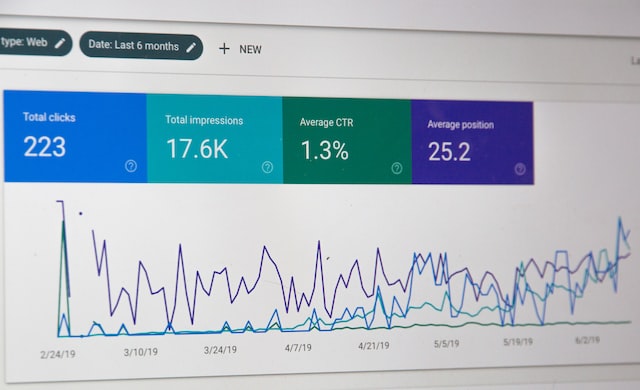Maximizing Revenue Growth Through Sales and Marketing Alignment

by editor
You started a campaign, generated leads, and now nothing. The leads are not converting into sales. Sales claims the leads aren’t good enough, while marketing claims sales did not follow up promptly enough. Sounds familiar? The actual issue is that your teams are not in sync.
This gap means squandered chances, since competition shows no signs of slowing down. To achieve meaningful revenue growth, sales and marketing must collaborate.
Why sales and marketing misalignment harms your business.
Why do silos exist?
Misaligned goals, fragmented tools, and poor communication are frequently the root causes of sales and marketing silos. Marketing focuses on lead generation and brand exposure, while tracking indicators such as site traffic and MQLs. Sales focuses on closing transactions and generating income.
Teams tend to function in isolation due to their diverse priorities and reporting systems. Without shared data or common tools, both parties can easily play by separate rules.
The real-world consequences of misalignment
Misaligned teams have a direct influence on revenues. Companies with good sales and marketing alignment generate 208% more income from their marketing activities. Without proper communication, leads slip through the cracks. Marketing may provide leads, but sales might not follow up quickly enough or overlooks critical data such as buyer personas or content performance. This results in wasted effort, lost revenue, and negative customer experiences.
When sales and marketing aren’t in sync, the customer feels it. Inconsistent messaging and poor handoffs confuse prospects and erode trust, making it difficult to close sales.
Relatable examples
Consider this: marketing launches a successful campaign and generates a lot of leads. Weeks later, those leads remain undisturbed. Sales claims the leads were not ready, but marketing questions why there was no follow-up. What’s the issue? There is no shared definition of a “qualified lead.”
The solution is simple: collaborate and use a common lead rating system. By agreeing on what constitutes a lead, both teams know when it is appropriate for sales to engage. This alignment avoids missed chances and keeps everyone focused on the same goal.
Shared metrics: A Common Ground for Success
To achieve alignment, concentrate on common KPIs like as pipeline growth and conversion rates. These measurements encourage collaboration by demonstrating how both teams’ activities contribute to business results. When marketing understands how their work affects closed deals and sales understands the need of high-quality leads, accountability is established across both teams, resulting in actual growth.
For smaller marketing teams, shared metrics assist prioritize efforts on the most important areas, such as nurturing leads with the highest conversion potential, allowing both teams to be more efficient.
Key metrics that both parties should care about are:
- Conversion rates: Track how leads progress through each stage of the funnel. This demonstrates whether campaigns produce qualified leads and sales convert them efficiently.
- Lead response time: A quick follow-up raises the chances of closing a deal. Monitoring this ensures that sales respond quickly and marketing generates high-quality leads.
- Pipeline expansion: A healthy pipeline is a collective triumph. Marketing generates leads for sales, who nurture and close them.
- Customer lifetime value (CLV): Focusing on CLV encourages both teams to recruit and retain high-value customers, resulting in long-term company success.
How to implement shared metrics?
- Setup shared dashboards: Track critical KPIs in real time with solutions such as Salesforce or HubSpot. This keeps everyone in sync and informed.
- Schedule regular reviews. Weekly or biweekly meetings help to assess performance and plan next moves.
- Develop accountability systems: To keep both teams interested, tie incentives to shared KPIs like as pipeline growth or conversion rates.
How to embed cross-departmental cooperation in your culture
Sales and marketing partnership is founded on effective communication. Without open channels, insights are lost, and plans do not respond swiftly. Regular joint meetings to discuss campaign updates, lead quality, and sales pipeline health are essential.
Use real-time communication technologies like Slack or Teams, as well as shared task management boards like Trello or Asana. These tools promote transparency and prompt replies, ensuring that nothing gets through the gaps.
For smaller marketing teams, efficient processes are even more important. Marketing may achieve more with fewer resources by maintaining open communication and utilizing efficient technologies.
Creating joint workflows
Agree on lead-scoring standards so that both teams can determine when a lead is sales-ready, and then proceed quickly to content cooperation. Marketing should provide sales-focused material such as case studies, product demos, and one-pagers to assist sales teams in closing agreements. Involve sales in content creation to ensure message is relevant to customer wants and objections, making it easier for them to engage and convert prospects.
Success Stories
Successful firms have realized the benefits of effective sales and marketing teamwork. HubSpot’s “Smarketing” strategy connects sales and marketing with common KPIs and dashboards, resulting in increased conversions and revenue results.
Similarly, Zendesk collaborated with both teams to create a lead-scoring system, which simplified the handoff process. This collaboration enhanced lead quality, resulted in shorter reaction times, and increased the number of closed agreements, strengthening the relationship between their sales and marketing departments.
Using technology to improve alignment
The correct technology unifies sales and marketing by facilitating communication and sharing data.
CRM solutions such as Salesforce provide insight into the customer journey, minimizing uncertainty regarding lead status and follow-up actions. Marketing automation technologies such as Marketo help to streamline lead nurturing and enable timely handoffs to sales, increasing conversion rates with real-time analytics.
Project management tools like as Asana and Trello help keep projects on schedule, remove bottlenecks, and promote communication by making progress visible to both teams.
How to Choose the Right Technology Stack
Ensure that CRM and marketing automation solutions work seamlessly together to give a single source of truth. Choose user-friendly solutions that simplify processes and promote adoption, allowing both teams to stay on track and work more efficiently.
Using data to promote collaboration
Real-time data sharing enables marketing to share campaign insights with sales, allowing sales to provide input on lead conversions. This feedback loop enables both teams to change plans and improve performance.
Continuous alignment is critical for keeping sales and marketing on the same page.
Maintaining alignment necessitates ongoing communication, feedback, and shared victories.
- Regular check-ins: Hold joint meetings once a week or biweekly to discuss metrics and synchronize strategies.
- Creating a feedback culture: Encourage both teams to provide real-time feedback so that they may continuously adjust and develop.
- Celebrating wins together: Recognize shared successes to improve teamwork and keep teams motivated.
By adhering to these guidelines, sales and marketing can function as a single team, resulting in continuous revenue growth and long-term success.
Recommended Posts

Can Attentiveness Actually Drive Campaign Success?
November 8, 2024

Marketers Must Create Time for Time Management
October 25, 2024

What Technology Do You Think Will Win the Martech Race?
September 20, 2024
